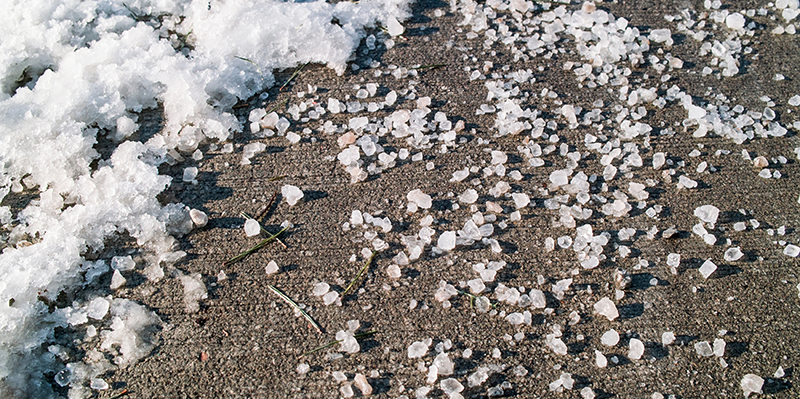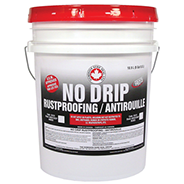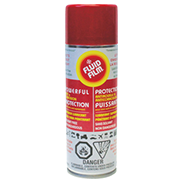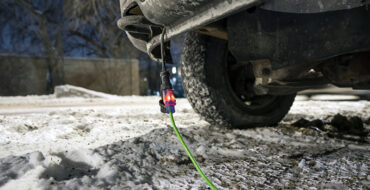When it comes to corrosion, there’s not much that’s worse for your vehicle than road salt. It’s as common in the winter as cold temperatures, and it’s necessary for safety, but road salt packs a double whammy when it comes to vehicle damage. Can you avoid it? We’ll tell you which provinces use road salt and how you can minimize damage to your car.
We’ll start with the bad news: Just about every province in Canada uses road salt in at least some cities and towns. If you want to avoid it completely, you’ll have to move to Nunavut. But there are some parts of Canada that use road salt for de-icing less than others.
According to the federal government, about five million tonnes of road salt is used every year in Canada. That’s less than in years past, but it’s still a lot of salt. Much of it is sodium chloride, but calcium chloride is also common.

Why Salt Works and Why It Hurts
Road salt helps with de-icing roads because it lowers the freezing point of water. When the freezing point is lower than the outside temperature, ice melts and can’t re-freeze. That’s why road salt is usually spread during winter weather events, so it can act directly on the falling snow to help melt it.
But road salt is spread on highways in the form of large, sharp crystals. These crystals are launched into the air by passing vehicles, and when they hit your car, there’s a good chance they’ll chip your paint.
As if paint chips weren’t bad enough, road salt works as an electrolyte when it touches the metal of your vehicle, causing the rusting process to speed up. After a few years of driving through winter road salt, your car can start to show severe rust damage.
To help with anti-icing, some regions spray their roads with a salt brine ahead of snowstorms. This saltwater mix stays on the roadway, helping to stop ice from forming in the first place. Brine won’t chip your paint, but it will ensure that salt gets into every crevice of your vehicle.

How to Avoid the Salt Sting
So how do you avoid road salt? The bad news is that you probably need to move somewhere colder. Salt loses its anti-icing effectiveness at lower temperatures, starting at around −10°C. By around −20°C, it has no de-icing effect at all. Even with added chemicals like beet juice, which some cities and provinces add to help melt road ice, road salt won’t work in extreme cold. So, when the mercury drops below −20°C, the spreading of road salt stops.
Because of longer stretches of extreme cold, the Prairie provinces, as well as northern Ontario and northern Quebec, use less road salt. It wouldn’t work even if they used the same amount as other regions, but they still use less and not no salt. Cities like Edmonton, Calgary, and Winnipeg—and even Yellowknife in the Northwest Territories—all use road salt when the temperatures are high enough for it to work, usually mixed with a large ratio of sand.
Thanks to the lower amounts used in Western Canada (some rural areas don’t use salt at all), vehicles in that part of the country generally have less rust. This isn’t guaranteed, though.
You could, of course, move to Victoria or Vancouver, but even those warmer cities use road salt some of the time.
Preventing Rust and Slowing It Down
To prevent road salt rust, you need to be proactive and reactive. Before the rust appears, visit a NAPA AUTOPRO location to have a rust preventative coating applied to your vehicle. You can also buy and apply these coatings yourself.
Wash your vehicle frequently after winter weather events. Insulated waterproof gloves will make this routine easier on your hands. An underbody wash is a must, as it can help remove salt before the rust sets in. If you notice paint chips, especially on metal parts, get a matching paint touch-up pen from your local NAPA Auto Parts store to cover and protect the bare paint on your vehicle.

Dominion Sure Seal Rust Preventative Coating No Drip Corrosion Material Oil Based, 20 L
252.99 $
Buy Now

Fluid Film Lubricant Multi Purpose Spray Fluid Film, 145 G
17.64 $
Buy Now







